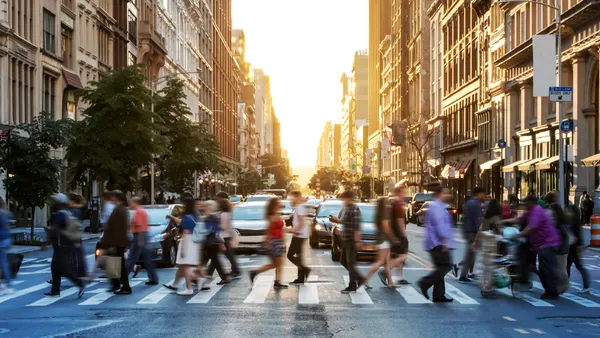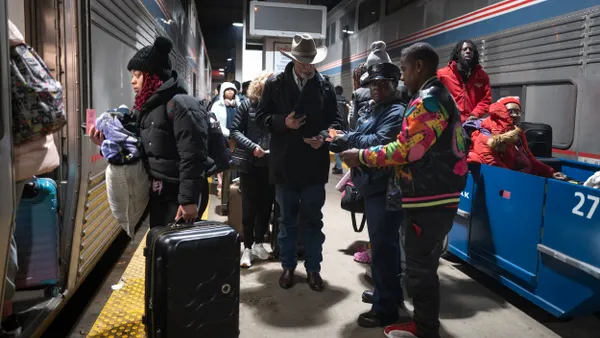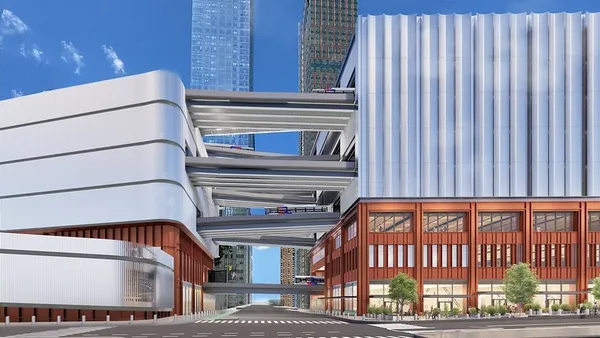Dive Brief:
- With pedestrian deaths on the rise, advocates said more focus must be placed on how streets can be redesigned and made safer, rather than "victim-blaming" those that have been killed.
- During a webinar Tuesday hosted by the National Complete Streets Coalition and Smart Growth America, representatives said the deaths of almost 6,000 pedestrians is troubling, but that the conversation must move away from trying to blame pedestrians and instead look at the culpability of drivers.
- "We've sort of come to accept these deaths as part of the background of our daily lives," Angie Schmitt, editor at Streetsblog USA, said during the webinar, adding the United States needs a "consciousness-raising event" to make people aware of the problem.
Dive Insight:
Statistics released earlier this year by the Governors Highway Safety Administration (GHSA) painted a troubling picture, with states projecting almost 6,000 pedestrian deaths in 2017, a figure GHSA said is "essentially unchanged" from 2016 and is at a 25-year high for the second year in a row. But Emiko Atherton, director of the National Complete Streets Coalition, criticized those figures for drawing a correlation between states that have legalized marijuana use and the rise in pedestrian fatalities, calling it "victim-blaming."
Instead, Schmitt said, cities should focus on street design and make them more pedestrian-friendly. And she said city leaders should be cognizant of mixed-use development that combines housing, restaurants and retail on busy streets, with "high traffic going somewhere quickly and a lot of destinations that people are going to want to access on foot." Combining all those factors, Schmitt said, could result in the higher likelihood of pedestrian crashes.
Design features that have worked well in cities including Detroit and Seattle include mid-block crossing areas, shortened crosswalks and longer timings and medians, while traffic cameras have also had an effect. During the webinar, reporter Eric Lawrence from the Detroit Free Press noted the civil liberties concerns around such cameras, but said they do help with safety. "Those kinds of things will slow people down and make them pay more attention," he said.
As cities try and make their streets safer for all users, especially with the likely increase in use of autonomous vehicles (AVs) in the coming years, investments in pedestrian infrastructure becomes paramount. And beyond the financial requirements, Schmitt said a "wider cultural bias" that cars dominate streets above all other multimodal needs must be addressed, especially given the growth of dockless bikes and scooters that create other ways to get around.










